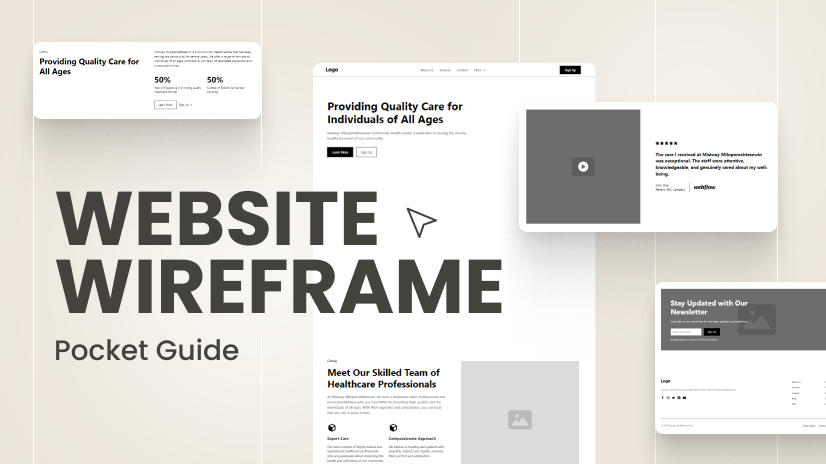Many of us must have heard the term “wireframe” while working with web designers. However, many people aren’t aware of benefits of wireframing and what does this mean for their web presence. Wireframing is quick and an effective way of identifying usability issues early on in the design process. Let us learn more about what are wireframes in website design?
What is a wireframe design?
You can call it a platform where a client and the web experts sit together to understand the informational hierarchy of a webpage. So, it becomes easier to plan the arrangement of content and the user experience. Wireframes in website design are simple, and low fidelity layouts that outline the arrangement and rough size of specific page elements from the conversion areas to site features. Wireframing makes sure that each page has a purpose, also achieves goals set out in the client’s brief, and it defines a logical navigation for your website. However, the wireframes minus the inclusion of any artistic fonts, color, or logos as they only focus on the structural elements of the website.
The wireframes allow you to work on the foundation.
If you are a web designer, you would be familiar with wireframing and also what are wireframes in website design. If you are a User Experience designer than you probably spend a large percentage of your time in the creation of the wireframes- either by hand with paper and pencil or by using some digital tools like Proto.io.
Why is Wireframing so Useful?
So, what is a wireframe used for in web design? Why do designers set out creating a skeleton for their new website project with wireframing? Rather, why don’t directly jump into the creation of detailed fun stuff from scratch? During the process of wireframing, web designers would get chance of focusing on user experience only- the factors that matter from most to everything from conversion.
Here is a list of reasons stating the benefits of wireframing:
- Instigate Layout and Structure: Many people come up with an extensive list of features and content that they would like to include on their website. Wireframes help the designer to determine which elements to include in each page and the personality requirements that need to be placed for those elements. Working on responsive web design wireframes enables the designer and the client to work on a single platform for creating a solid page structure before full implementation of the design.
- Creating an informational hierarchy Wireframes in website design not only get the client and the designer on a single platform but also helps the companies to focus on the crucial elements of navigation and information. The creators can ask themselves what they want their users to do when they visit their website. As soon as the wireframe is created- designers and client can see which of the page elements are crucial and which are not. The black and white and the low fidelity nature of the frame allow people to see how the information on each page falls neatly into place.
- Focusing on User Experience As it has been already mentioned, wireframes have the unique ability to draw unparalleled attention to the basic structure and the function of a website- the elements that will have an impact on the user experience. With the elimination of imagery, colors, and other details a designer becomes much enabled to think on the functionality of each of the element used. This allows the designer to focus on developing the best user experience.
- Clarifying Features Wireframes in website design help you in determining which features are wanted on a website and which elements are needed in the early stages of development. The clients and the web designers can bet chances of working together for trying out a different potential application and the tools that might get usability for their visitors to aid conversions. Sometimes you may choose to remove a feature as soon as it has been wireframed. As you can see that it simply doesn’t help towards the goals of your website. Seeing features without any creative influence can help you to clarify which elements really matter.
- Saving Time One of the benefits of wireframing is that it saves time. While it may seem like more effort to dedicate a few days to produce a full set of wireframes as it actually saves time throughout the project’s lifecycle. Those designers would be lucky enough to have their UX team sitting beside them as they will get the approved wireframe from which they have to design. This makes their processing phase quite shorted and simpler, as the time required for ensuring that each page has its flow and purpose gets eliminated at the wireframing process. This allows them to do whatever they can do best; make the low fidelity wireframe look far better by turning it into the full design concept.



